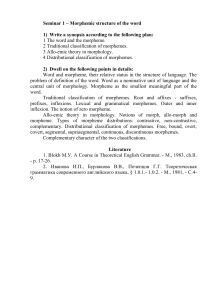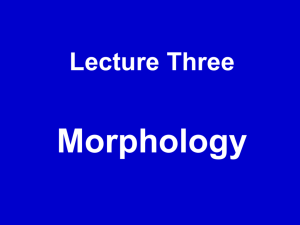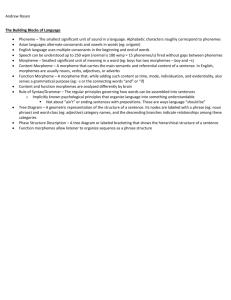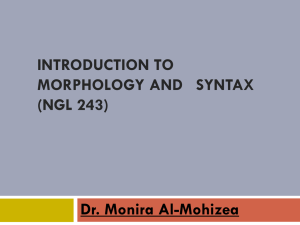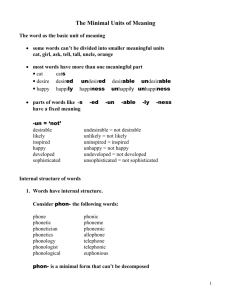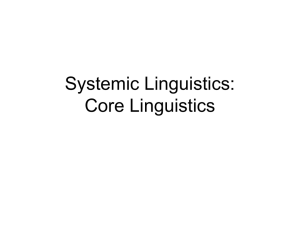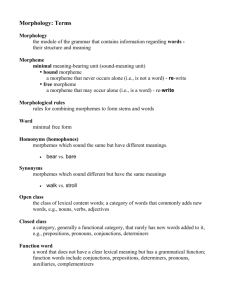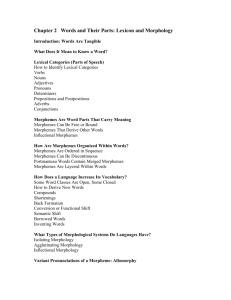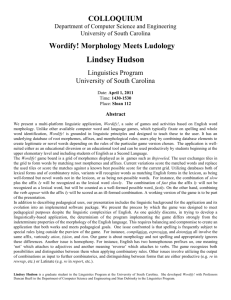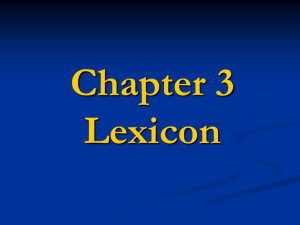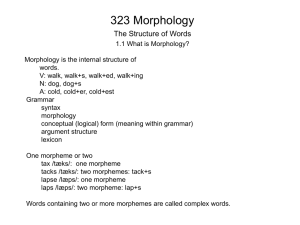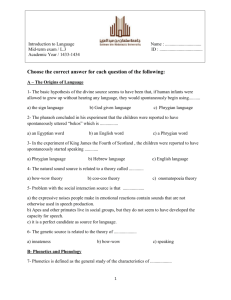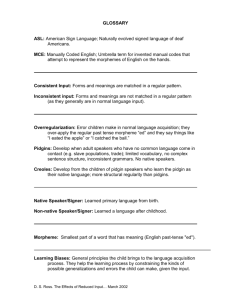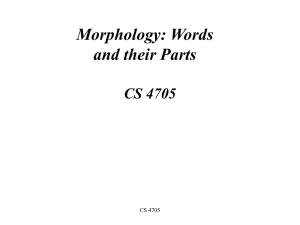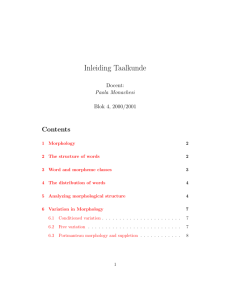F10_L1_data-collection
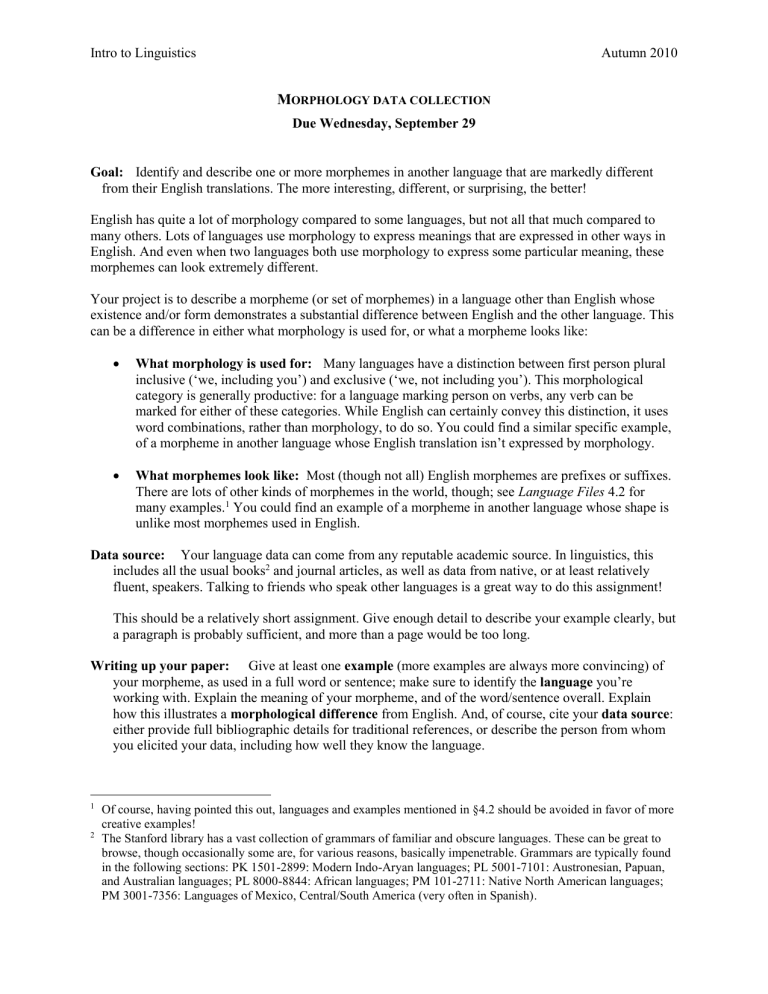
Intro to Linguistics Autumn 2010
M
ORPHOLOGY DATA COLLECTION
Due Wednesday, September 29
Goal: Identify and describe one or more morphemes in another language that are markedly different from their English translations. The more interesting, different, or surprising, the better!
English has quite a lot of morphology compared to some languages, but not all that much compared to many others. Lots of languages use morphology to express meanings that are expressed in other ways in
English. And even when two languages both use morphology to express some particular meaning, these morphemes can look extremely different.
Your project is to describe a morpheme (or set of morphemes) in a language other than English whose existence and/or form demonstrates a substantial difference between English and the other language. This can be a difference in either what morphology is used for, or what a morpheme looks like:
What morphology is used for: Many languages have a distinction between first person plural inclusive (‘we, including you’) and exclusive (‘we, not including you’). This morphological category is generally productive: for a language marking person on verbs, any verb can be marked for either of these categories. While English can certainly convey this distinction, it uses word combinations, rather than morphology, to do so. You could find a similar specific example, of a morpheme in another language whose English translation isn’t expressed by morphology.
What morphemes look like: Most (though not all) English morphemes are prefixes or suffixes.
There are lots of other kinds of morphemes in the world, though; see Language Files 4.2 for many examples.
1 You could find an example of a morpheme in another language whose shape is unlike most morphemes used in English.
Data source: Your language data can come from any reputable academic source. In linguistics, this includes all the usual books 2 and journal articles, as well as data from native, or at least relatively fluent, speakers. Talking to friends who speak other languages is a great way to do this assignment!
This should be a relatively short assignment. Give enough detail to describe your example clearly, but a paragraph is probably sufficient, and more than a page would be too long.
Writing up your paper: Give at least one example (more examples are always more convincing) of your morpheme, as used in a full word or sentence; make sure to identify the language you’re working with. Explain the meaning of your morpheme, and of the word/sentence overall. Explain how this illustrates a morphological difference from English. And, of course, cite your data source : either provide full bibliographic details for traditional references, or describe the person from whom you elicited your data, including how well they know the language.
1 Of course, having pointed this out, languages and examples mentioned in §4.2 should be avoided in favor of more creative examples!
2 The Stanford library has a vast collection of grammars of familiar and obscure languages. These can be great to browse, though occasionally some are, for various reasons, basically impenetrable. Grammars are typically found in the following sections: PK 1501-2899: Modern Indo-Aryan languages; PL 5001-7101: Austronesian, Papuan, and Australian languages; PL 8000-8844: African languages; PM 101-2711: Native North American languages;
PM 3001-7356: Languages of Mexico, Central/South America (very often in Spanish).

